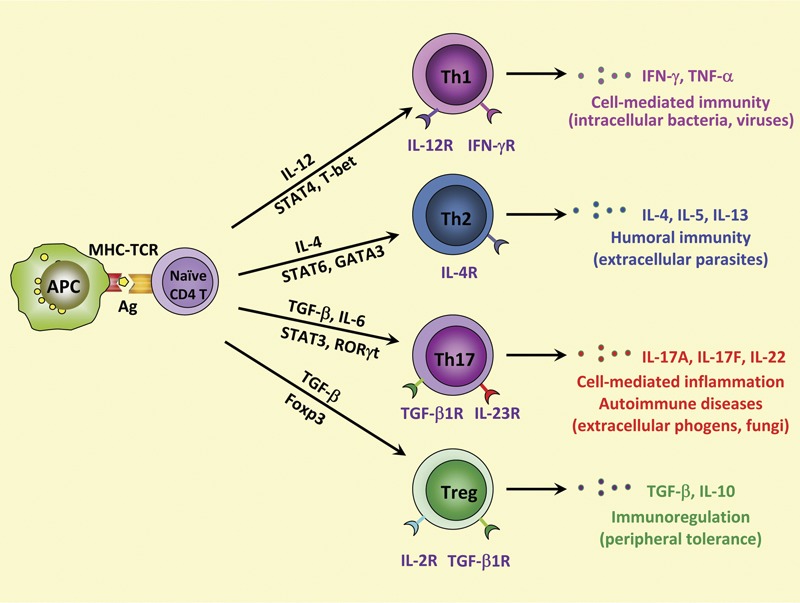Figure 1.

Model for Th cell differentiation from naive CD4+ T cells. In the presence of IL-12, differentiation of naive CD4+ T cells into Th1 cells requires activation of the master regulator transcription factor T-bet through STAT1 and STAT4. Th1 cells produce IFN-γ and are involved in cell-mediated immunity against intracellular bacteria and viruses. IL-4 promotes the activation of STAT6 and GATA3, which are responsible for Th2 cell differentiation. Th2 cells are important in humoral immunity against parasites, an action that is mediated through their production of IL-4, IL-5 and IL-13. The combination of TGF-β and proinflammatory cytokines, such as IL-6 and IL-23, drives the differentiation of naive CD4+ T cells into IL-17-producing Th cells (Th17) through the regulation of STAT3 and RORγt. Th17 cells play a critical role in host protection against extracellular pathogens and in inflammatory autoimmune diseases. In addition, TGF-β can induce differentiation of naive CD4+ T cells into Foxp3+ Treg cells, which produce TGF-β and IL-10 and act as modulators of immune responses. APC, antigen-presenting cell; Foxp3+, forkhead box p3+; IFN, interferon; MHC–TCR, major histocompatibility complex–T-cell receptor; ROR, retinoid-related orphan receptor; TGF, transforming growth factor; Th, T helper; Treg, regulatory T.
